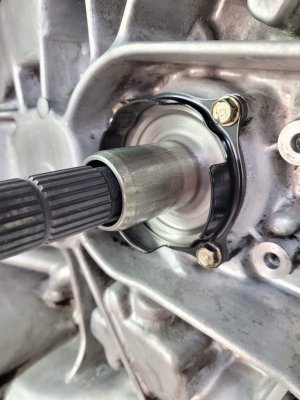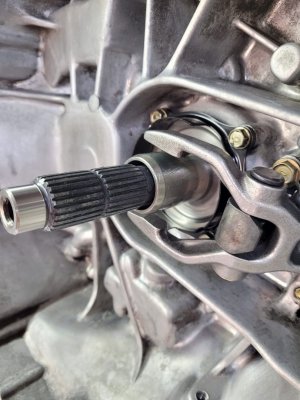My 1991 had its first clutch change last year at 92K miles. Although it didn't slip, a slight vibration at the bite point in first gear was diagnosed as a worn flywheel, and frequent resistance in getting the shift lever out of gear was a sign of clutch trouble to come. The time was right to go ahead with a replacement. I ordered the full Honda genuine kit including flywheel, discs and pressure plates, TO bearing and guide, fork, and had it installed.
Now, the gearbox shifts beautifully, but the vibration got worse. When taking off in first gear, I can't work the clutch to avoid annoying shakes felt throughout the car, even the steering wheel visibly shakes momentarily. However, there are no pulsations through the pedal (as reported in some similar instances).
I did my research and found that motor and trans mounts could be the culprit. I went ahead and ordered the full set of 4 mounts. They're now installed but no luck, the clutch bite point rattles the car.
To me it feels like the clutch grabs too abruptly, the friction material allows for too little slippage, no matter how quickly or slowly the pedal is released, with little or more revs.
The technician who did the work is not a seasoned NSX guy, none exist in my area, but he did great work on my Porsche cars of the same era and followed the shop manual closely. The fact that gears engage and disengage nicely leads me to believe the initialization was done correctly, but I could be wrong.
Any ideas?
Now, the gearbox shifts beautifully, but the vibration got worse. When taking off in first gear, I can't work the clutch to avoid annoying shakes felt throughout the car, even the steering wheel visibly shakes momentarily. However, there are no pulsations through the pedal (as reported in some similar instances).
I did my research and found that motor and trans mounts could be the culprit. I went ahead and ordered the full set of 4 mounts. They're now installed but no luck, the clutch bite point rattles the car.
To me it feels like the clutch grabs too abruptly, the friction material allows for too little slippage, no matter how quickly or slowly the pedal is released, with little or more revs.
The technician who did the work is not a seasoned NSX guy, none exist in my area, but he did great work on my Porsche cars of the same era and followed the shop manual closely. The fact that gears engage and disengage nicely leads me to believe the initialization was done correctly, but I could be wrong.
Any ideas?











